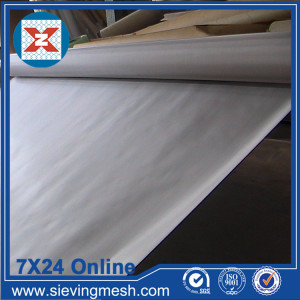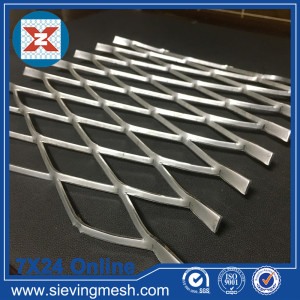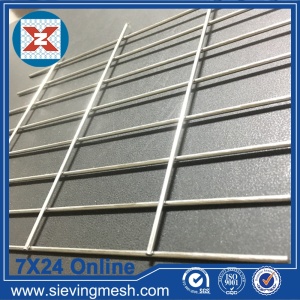The price of steel breaks through a 10-year high, how to curb the soaring iron ore?
Recently, the price of steel has risen again and again, and the price of raw material iron ore has risen from an average price of US$108 per ton in 2020 to a historical high of US$210 per ton. Both China and the United States seem to be in a shortage of steel. "Dilemma", the base metal that has always been "high-quality and low-cost" seems to be covered with the attributes of precious metals. So what is the logic behind the continuous rise in global steel and iron ore prices? What is the deep reason? How will high steel prices adversely affect us? How to curb high steel prices?
1. What are the reasons behind the large-scale price increase of domestic steel mills?
Recently, a number of domestic steel mills have also continued to raise prices. More than 90 steel mills have voluntarily increased their scrap steel purchase prices in order to secure the supply of raw materials. The ex-factory steel prices have also continuously climbed to 5,350 yuan per ton. The continuous increase in domestic steel prices is caused by various international and domestic factors. At the international level, the price of raw material iron ore has risen steadily, directly leading to a significant increase in the cost of steel mills; at the domestic level, due to environmental protection reasons, some steel mills have been restricted in production and reduced production, and steel production capacity cannot meet the increasing demand for steel. Due to the strong boost of the domestic economy, the recovery trend is obvious, the development situation of domestic new infrastructure is good, and the demand for steel is steadily increasing.
In fact, the rise in steel consumption demand, the inflated iron ore price, and the insufficient capacity of domestic steel mills are only part of the reasons for the high steel prices. Another part of the underlying factor is that many steel companies and intermediaries see steel prices return in the short term. Will maintain an upward trend, so a large amount of steel is hoarded for profit. This is also the deep-seated reason why the actual steel inventory is high, but the market supply is low.
Relying on the tight domestic steel market this year, most of the steel companies that have been losing money due to overcapacity in the past have achieved profits this year. More than 30 domestic steel companies made good profits in the first quarter, of which Baosteel`s net profit in the first quarter exceeded 50%. 100 million yuan, which was very rare in the past.
On the whole, China's economy has recovered vigorously in the post-epidemic era, superimposed on high iron ore prices and insufficient capacity of domestic suppliers. Various factors have led to the crazy market of domestic steel prices.
2. The United States also lacks steel? The world falls into a steel shortage pattern?
According to the analysis of the American Iron and Steel Industry Association, recently American steel products have also fallen into supply shortages and prices have soared. According to US media reports, the current price of hot-rolled steel coil in the United States has reached a high of US$1,500 per ton, which has touched the historical high of hot-rolled steel coil in the United States, which is equivalent to three times the average price level in the past 20 years. In 2020, due to the impact of the epidemic on production and consumption and the economic downturn, hot-rolled steel hit a historical low of US$460 per ton, which was only less than a year away.
Hot-rolled steel has risen by more than $1,000, and steel prices have experienced a roller coaster-like trend. So why is the US steel market so tight and panic? What is the reason?
On the one hand, the Biden government has continuously introduced large-scale fiscal stimulus policies, including the first wave of 1.9 trillion "helicopter money" subsidies and the second wave of 3 trillion infrastructure stimulus plans. Inflation on a global scale is the first factor that causes the price of steel to rise rapidly. On the other hand, Biden`s infrastructure stimulus plan covers a number of infrastructure reconstruction and renovation plans such as bridges, highways, stations, airports, ports, etc., which will lead to a surge in demand for steel in the United States, which also directly leads to the futures market. The rapid rise in prices. U.S. industry analysts said that the [panic" in the U.S. and global steel markets is spreading, and it is also boosting the tension in the U.S. steel market.
3. How do high iron ore prices adversely affect us? How to curb high steel prices?
The continuous rise in global iron ore prices is the direct cause of the rise in domestic steel prices, and the iron ore pricing monopoly system is the fundamental reason for supporting high iron ore prices.
The average value of the Platts ore price index in 2020 is US$108 per ton, and in May 2021, the Platts ore price index has exceeded the historical high value of US$210 per ton.
The world`s main iron ore supply is mainly concentrated in the hands of the four major miners of Vale, Rio Tinto, BHP Billiton and FMG. my country`s iron ore is highly dependent on imports. Brazil and Australia alone account for more than 80% of my country`s iron ore supply. . Due to the excessive concentration of resources, the world's four major miners have absolute say in iron ore pricing.
Although the current global epidemic has been effectively controlled and the economic situation has recovered to a certain extent, the recovery trend and global infrastructure demand, including China and the United States, are far from supporting US$210 per ton of iron ore. There is no doubt that the price of stone has seriously deviated from the current fundamentals. The current high price of iron ore is the result of a monopolistic pricing system and capital market speculation.
How will the high iron ore price adversely affect us?
One is that high ore prices will be transmitted to all aspects of the steel industry chain. The high iron ore will severely compress the profit margins of downstream steelmaking companies. Steel companies have to increase steel prices in order to make profits. However, the increase in steel prices will inevitably be transmitted to the downstream of the industrial chain and ultimately to consumers. The prices of all terminal products that use steel will be affected. For example, the cost of rails and trains will rise; the prices of construction and building materials will rise; the cost of automobiles will rise; stainless steel knives and vacuum flasks will be affected by fluctuations in steel prices. According to industry data, many iron and steel companies, including Baosteel, Baotou Steel, Shandong Iron and Steel, Nanjing Iron and Steel Co., Ltd., and Hangzhou Iron and Steel Co., Ltd., have spent 30% more on iron ore raw materials than in 2019.
Second, steel is an important basic material, and its price rise will inevitably lead to a certain degree of inflation. This inflation will conduct horizontal transmission and indirectly raise prices, including food, eggs, milk, oil and other important materials related to people's livelihood.
Third, high ore and steel prices are not conducive to the high-efficiency and environmental protection reforms of domestic steel companies. High steel prices will make those low-efficiency and high-energy-consuming steel production lines still profitable, which is not conducive to the investment of closed steel companies. Energy to update technology and equipment, and develop towards low energy consumption and high efficiency.
Fourth, the price of iron ore will also seriously impact the manufacturing industry. Due to the rise in steel prices, the production enthusiasm of many downstream manufacturing companies that use steel as raw materials has declined. Under the current high steel prices, it will inevitably lead to an increase in terminal prices, such as , Building materials companies, car companies, etc., do not rule out that these downstream companies will temporarily restrict production and wait and see that steel prices return to a reasonable range before proceeding to normal production.
4. How long will the high price of iron ore last? How to deal with the negative impact of steel prices on us?
In the short term, due to high profits, the four major miners in Australia and Brazil will not increase production significantly. As the international epidemic situation and the pace of economic recovery are further improved, the global consumption of steel will continue to grow slowly. In 2021 Iron ore will still maintain a high price range throughout the year. In the medium and long term, after the release of infrastructure manuscripts and the decline in the effectiveness of stimulus policies, steel consumption will fall into a downward trend, and iron ore will be greatly impacted by then and gradually return to the rational range. The four major miners will also bid farewell to the profiteering model.
Regarding the current high prices, one is that we should fully look for alternative sources other than the four major miners, or gradually shift Australia`s share of iron ore to Brazil, and stir up the price of ore between Australia and Brazil through China`s huge buyer power. Competition disrupts the current monopolistic pricing system of the four major miners. Second, we should fully crack down on steel hoarding under the current high steel prices, release steel stocks in the domestic market as much as possible, and alleviate the shortage of steel.




